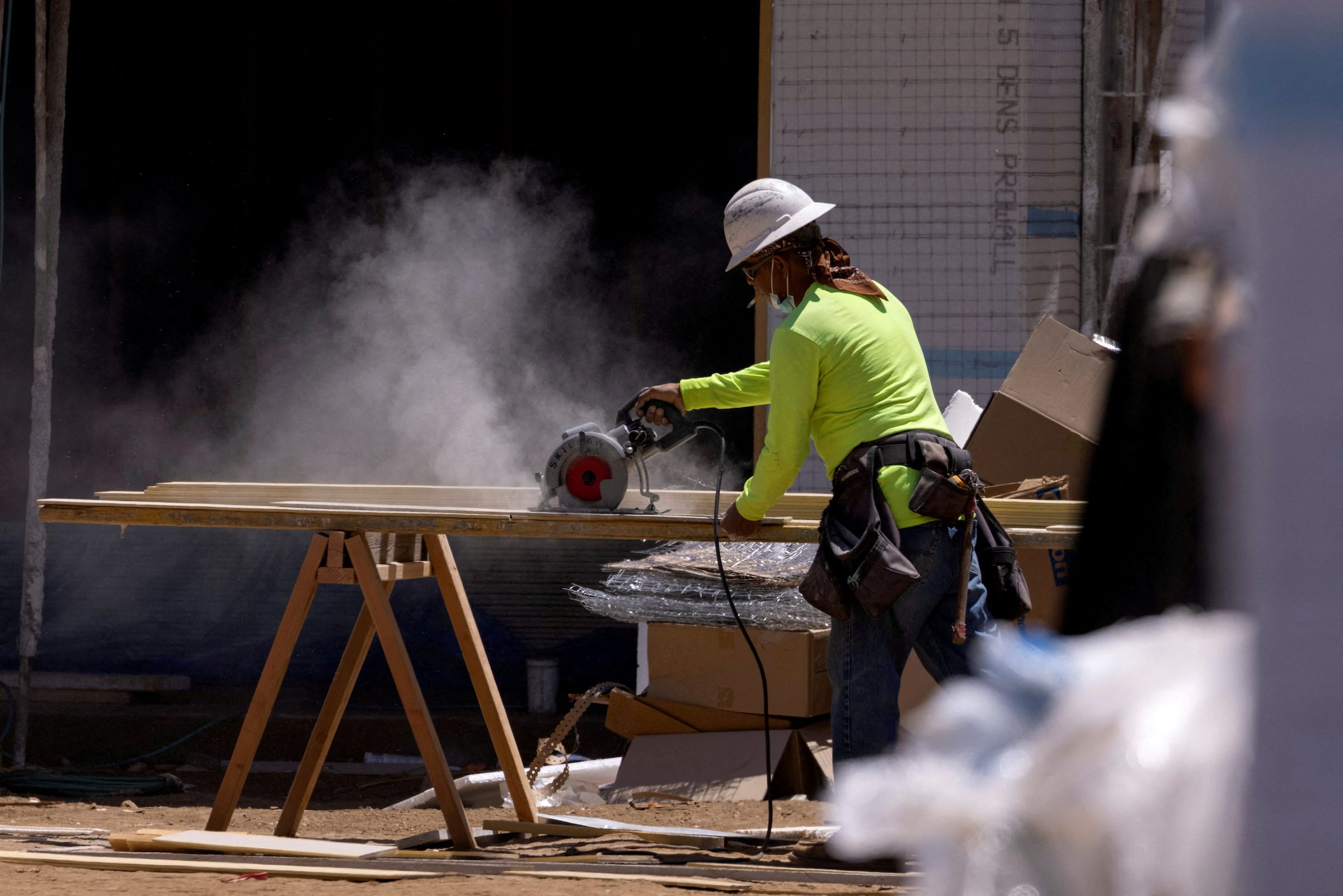SUMMARY
This is AI generated summarization, which may have errors. For context, always refer to the full article.

WASHINGTON, USA – US job openings unexpectedly rose in April and data for the prior month was revised higher, pointing to persistent strength in the labor market that could compel the Federal Reserve to raise interest rates again in June.
The Job Openings and Labor Turnover Survey, or JOLTS report, from the Department of Labor on Wednesday, May 31, also showed layoffs declined significantly last month. There were 1.8 job openings for every unemployed person in April, up from 1.7 in March, and well above the 1-1.2 range that is considered consistent with a jobs market that is not generating too much inflation.
The report added to data this month, including consumer spending, in suggesting that the economy regained speed at the start of the second quarter.
Demand has remained resilient despite 500 basis points worth of interest rate increases from the Fed since March 2022, when the US central bank embarked on its fastest monetary policy tightening campaign since the 1980s to tame inflation. The flow of strong data has diminished expectations that the Fed could pause further rate increases.
“This is not what the Fed was hoping to see,” said Priscilla Thiagamoorthy, a senior economist at BMO Capital Markets in Toronto.
Job openings, a measure of labor demand, increased by 358,000 to 10.1 million on the last day of April. Data for March was revised higher to show 9.75 million job openings instead of the previously reported 9.59 million. The April data ended three straight monthly decreases in job vacancies. Economists polled by Reuters had forecast 9.375 million job openings.
The increase in job vacancies was led by retail trade, where there were an additional 209,000 openings. There were 185,000 more job openings in healthcare and social assistance, while vacancies jumped by 154,000 in the transportation, warehousing, and utilities sector. Notable increases were also reported in construction as well as finance and insurance industries.
But job openings declined in durable goods manufacturing, which has seen demand for goods slowing as higher interest rates increase the cost of credit. Spending is also shifting back to services.
Job openings surged in the West and Midwest. They rose moderately in the South, but fell in the Northeast.
Businesses with one to nine employees and those with 250 to 999 workers accounted for last month’s rise in job vacancies. Companies with 10 to 49 workers reported a sharp drop.
The job openings rate rose to 6.1% from 5.9% in March.
The Fed’s “Beige Book” report on Wednesday described the labor market as having “continued to be strong” in May, “with contacts reporting difficulty finding workers across a wide range of skill levels and industries.”
But it also noted that contacts across districts reported that “the labor market had cooled some, highlighting easier hiring in construction, transportation, and finance.”
Stocks on Wall Street were trading lower. The dollar rose against a basket of currencies. US Treasury prices rose.
Fewer resignations
Minutes of the Fed’s May 2-3 policy meeting, which were published last week, showed policymakers “generally agreed” the need for further rate hikes “had become less certain.”
Some economists are, however, skeptical that the JOLTS report is offering a clear read of the labor market.
According to Goldman Sachs economist Ronnie Walker, a low response rate to the survey, which has reduced the sample size, could be boosting the JOLTS data, noting that some alternative measures of job openings from LinkUp and ZipRecruiter, have declined sharply in the past year.
But Walker also acknowledged that some of the alternative measures of job openings could be downwardly biased, as their samples could be skewed toward companies which are more likely to have an online presence and have cut job openings sharply.
“As a result, we suspect that the ‘true’ level of job openings lies somewhere in the middle of the range implied by JOLTS and alternative measures of job openings,” Walker said.
The JOLTS report showed layoffs fell 264,000 to 1.6 million, consistent with the very low levels of weekly unemployment claims data. Layoffs decreased by 113,000 in construction, another sector hard hit by the Fed’s rate hikes.
There were also notable declines in information, leisure, and hospitality as well as healthcare and social assistance.
Despite the strong demand for labor, workers are growing less confident, leading to fewer resignations. The quits rate, viewed as a measure of labor market confidence, fell to 2.4% from 2.5% in March.
That aligns with a Conference Board survey on Tuesday, May 30, that showed the share of people viewing jobs as “plentiful” dropped in May to the lowest level since April 2021.
Resignations declined in the professional and business services, healthcare, and social assistance categories as well as in durable goods manufacturing. They dropped in the Northeast and South. There were modest increases in the West and Midwest.
“This suggests that the labor market is slackening, despite the reported increase in job openings, and that workers are increasingly sheltering in place in their jobs as better alternatives become less available,” said Julia Pollak, chief economist at ZipRecruiter. – Rappler.com
Add a comment
How does this make you feel?

![[OPINION] A rebellion long overdue](https://www.rappler.com/tachyon/2024/06/mass-uprising-matrix-june-4-2024.jpg?resize=257%2C257&crop_strategy=attention)













There are no comments yet. Add your comment to start the conversation.